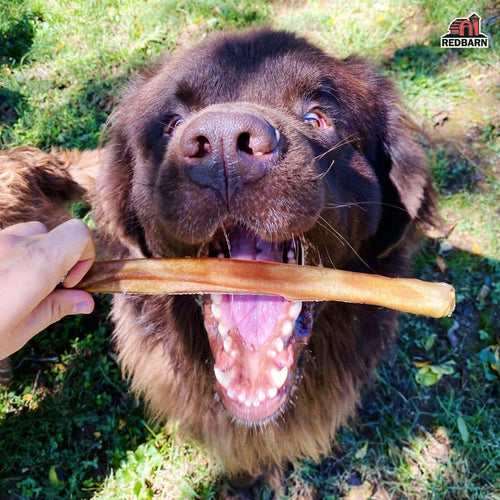
Oral Hygiene For Your Cat
Share
Better Oral Hygiene Begins with 3 Simple Steps
Clean teeth and healthy gums are important for the overall health of your feline. So, what can you do to guarantee your cat’s teeth and gums stay in tip top shape? Most likely, your cat will disapprove of you brushing her teeth. In fact, it may seem like the battle of the century when you attempt to do so, but this battle is very important for the health and well-being of your pet.
Without proper oral hygiene, plaque and tartar will build up on her teeth and gums. Eventually, the result will be loosened teeth, sore gums, damage to the tongue and a host of other health risks. If you nearly fall over from the foul smell of your kitty’s mouth, she may have digestive problems or gingivitis. If this is the case, it is highly advisable that you examine your pet, as there may be an issue that requires immediate attention.
Face your cat, gently open her mouth, and look at the teeth and gums. Do her teeth have brownish residue on them? Check for loose or broken teeth. Examine the gums to see what color they are and if they are swollen. Healthy gums are pink with no signs of pus, ulcers or dark red lines. If they are red with some inflammation, and possibly receding below the teeth, that could be a sign of oral disease.
Other things to watch for include excessive drooling, pawing at the mouth, or having difficulty chewing. Gum disease can lead to more serious internal problems like kidney conditions or Feline Immunodeficiency Virus. You can prevent these health risks, by developing a routine oral hygiene program for your cat at an early age. Usually, plaque-forming food and bacteria remain on the tooth surface and build up over time. The residual foods can harden into tartar on teeth, which may lead to the gingivitis, tooth loss, and gum disease. Some of the conditions that can result from poor oral hygiene include:
- Gingivitis is an inflammation of the gums which is often found in senior cats. The condition often begins with a dark red line that borders the teeth and gum line. If gingivitis is left untreated, it can escalate into sores and ulcers.
- Periodontitis is when gingivitis enters the roots of the teeth, causing them to loosen and abscessed. A bacterial infection can ensue and if it enters the bloodstream, a minor oral problem can quickly become fatal.
- Stomatitis is an inflammation of the lining of the mouth, usually caused by a foreign object in the oral area, a dental condition, or a viral disease. A cat with Stomatitis can have difficulty eating and the entire lining of the mouth will look red in color.
- A rodent ulcer is a sore within the mouth or upper lip area that slowly gets enlarged and swollen.
- A Salivary Cyst forms when the salivary ducts or glands become blocked, especially under the tongue area.
Preventative care in oral hygiene begins with a visit to your veterinarian for a full dental examination. By age 2 or 3, your cat may need a professional polishing and cleaning. You may think, “Yea, right, my cat isn’t going to let me into her mouth to brush its teeth?!” Yes, it can be a challenge for the older cat because she is already set in her ways, but it is not impossible. Best case scenario, begin oral hygiene the moment you adopt your cat. The younger your cat is when you start, the easier it will be; it will be routine and acceptable. The older feline will require more determination, consistency and patience on your part.
There are several ways that you can brush your cat’s teeth. Your vet will be happy to advise you on the proper oral supplies required to keep your cat’s smile in pristine condition. Some of the supplies you may need are cotton swabs or a small toothbrush, and a tube of flavored toothpaste specifically for felines. Just remember; never, ever use human toothpaste on your cat’s teeth. Cat toothpastes are available. They use baking powder as a base, and an oxygenating substance to help ward off the growth of anaerobic bacteria.
Follow these simple steps in brushing your cat’s teeth;
- Begin slowly and gradually, first using just your finger or a small finger toothbrush. Gently massage the teeth and gums. This process will accustom your cat to the “invasion” of his/her oral space.
- Now introduce the toothpaste. Try dipping the brush, or your finger, in the water of canned tuna. Rub the teeth and inside the lip area. After some progress, put a tiny bit of toothpaste on your finger tip and let your cat sniff and lick it to satisfy its curiosity.
- You can now introduce the toothbrush with a bit of toothpaste. Begin to gently brush a few teeth while talking in a low, soft tone of voice to your cat, as a way of reassuring her. As your cat accepts a small amount of brushing, you can proceed with more each time until you can successfully brush all of those pearly whites.
Be extremely consistent and patient with your cat because the goal is to make the process as pleasant as possible; a real bonding time for the two of you with sweet-smelling benefits. Even after your cat accepts the process, there may be times you are successful and other times where the brushing is cut short due to stress. If this happens, stop and try again the next day, beginning with step one again, if you must. Continuing on a stressed-out feline will only instill in him or her that there are better things to do than have a beautiful smile.
There are other small things you can do to maintain your cat’s healthy teeth. To remove plaque buildup and minimize residue on the surface of the teeth and gums, feed your cat a dry food alternately with your canned varieties. Dry food rubs against the teeth while chewing, while wet food will leave excess food and gravies within the mouth. Also provide some special chew toys for your kitty to chomp on. This is a natural way to massage the gums, floss the teeth and scrape away soft tartar. Oral hygiene chews are available. They can help maintain a healthy mouth and your cat’s overall health.
All data and information provided on this site is for informational purposes only and reflect the views of the authors alone, and do not necessarily reflect those of the organization. Redbarninc.com makes no representations as to accuracy, completeness, timeliness, suitability, or validity of any information on this site and will not be liable for any errors, omissions, or delays in this information or any losses, injuries, or damages arising from its display or use. All information is provided on an as-is basis. Please note that each situation is different, and you should always consult your veterinarian should you have any questions about your pet’s health.



